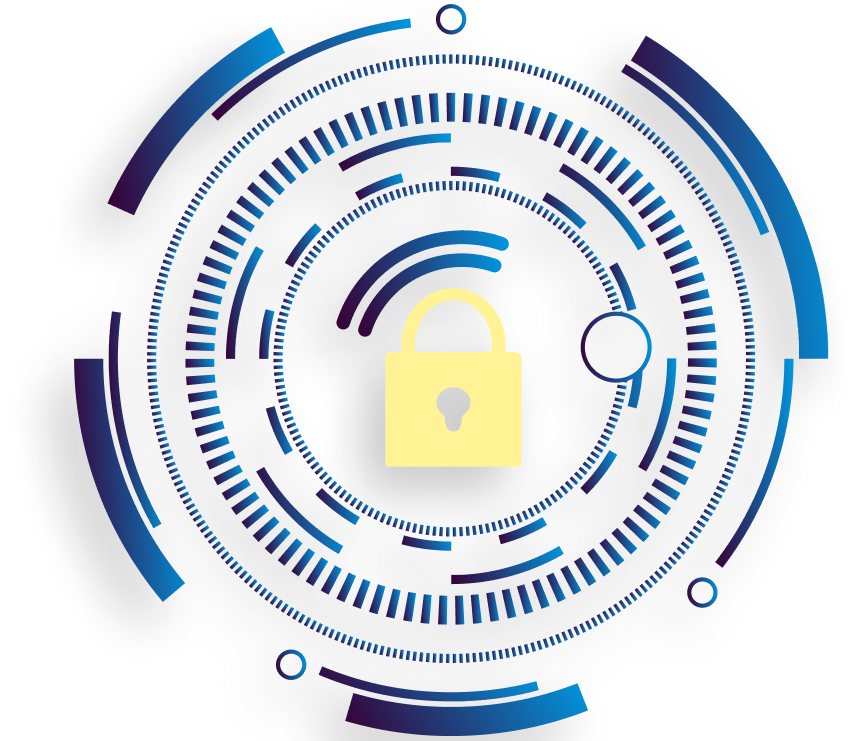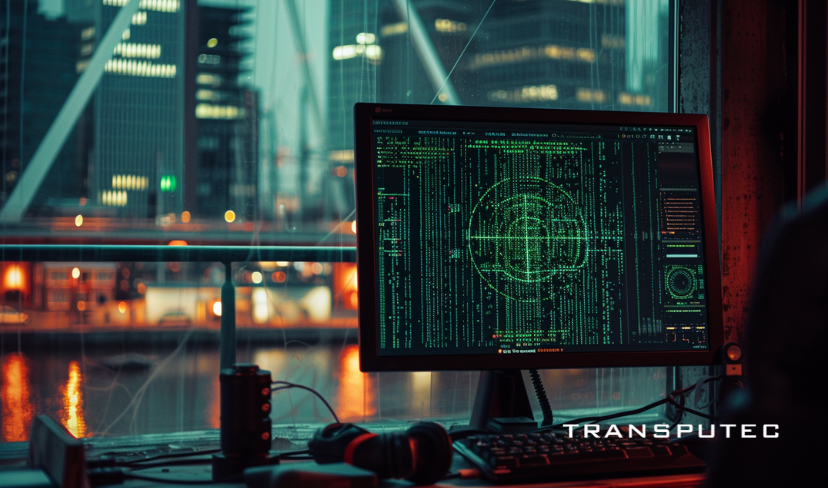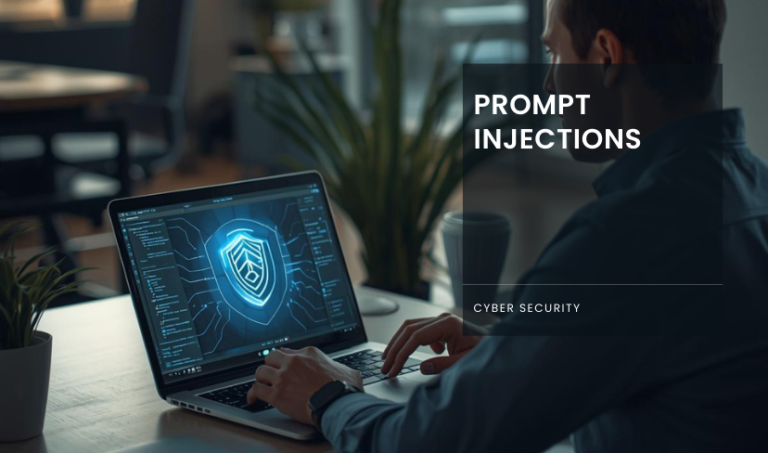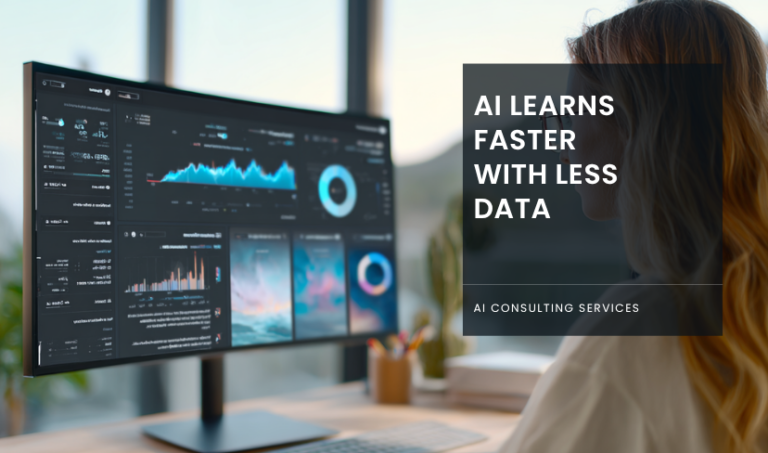Written by KRITIKA SINHA | MARKETING
Ransomware attacks have become a significant threat to businesses of all sizes. These malicious attacks can cripple operations, compromise sensitive data, and result in substantial financial losses. As cybercriminals continue to evolve their tactics, it’s crucial to implement robust endpoint protection for ransomware to safeguard your organisation. The 2022 Verizon Data Breach Investigations Report (DBIR) found that ransomware was the second most common type of malware incident, accounting for 25% of all malware incidents analysed in the report. In this comprehensive guide, we’ll explore the details of “What Does Ransomware Do to an Endpoint Device?” and provide insights into its recovery, protection, and prevention.
How to Recover Data From Ransomware Attack?
Transputec is a leading provider of ransomware virus recovery services. We offer a wide range of services, focusing on protecting and securing your data. Our expertise lies in recovering computer systems from ransomware viruses, allowing businesses to swiftly resume operations with our invaluable assistance.
Understanding Ransomware Attacks
Ransomware is a type of malware that is designed to hold a victim’s data hostage by encrypting it and demanding a ransom payment in exchange for the decryption key. It can infect endpoint devices, such as computers, laptops, smartphones, and tablets, through various methods, including phishing emails, malicious websites, and software vulnerabilities.
Once a device is infected, it will begin to encrypt files, making them unreadable and unusable. The encryption process can be swift, and in some cases, it can spread to other connected devices or network shares, compounding the damage.
Types of Ransomware Attacks on Endpoint Devices
Several types of ransomware attacks can target endpoint devices like computers, laptops, smartphones, and tablets. Here are some of the most common types:
1. Crypto Ransomware or Encryptors:
This is one of the most prevalent and damaging forms of ransomware. It encrypts files and data on the infected endpoint device, rendering them inaccessible without a decryption key. Examples include CryptoLocker, WannaCry, and Locky.
2. Locker Ransomware
It completely locks the victim out of their device, preventing access to files, applications, and the operating system. A ransom note is typically displayed on the lock screen demanding payment to regain access. Examples include WinLocker and Reveton.
3. Scareware
Scareware tricks victims into believing their device is infected with malware or has other issues. It then demands payment to resolve the fake problem, often by flooding the screen with pop-up alerts.
4. Doxware or Leakware
Doxware or Leakware threatens to publish or leak sensitive personal or company data online if the ransom is not paid.
5. Ransomware-as-a-Service (RaaS)
RaaS is a business model where ransomware developers sell or lease their malware to other cybercriminals, who then carry out the attacks and share a portion of the ransom payments.
6. Double Extortion Ransomware
This not only encrypts data on the victim’s device but also exfiltrates sensitive data, threatening to release it publicly if the ransom is not paid. This adds an extra layer of pressure on victims to pay up.
“Ransomware can infect endpoint devices through various methods, such as phishing emails, malicious websites, exploit kits, and vulnerabilities in software or remote access tools. Proper cybersecurity measures, including regular backups, software updates, and employee training, are crucial to mitigate the risk of these attacks on endpoint devices."
The Impact of Ransomware on Endpoint Devices
When ransomware infects an endpoint device, it can have far-reaching consequences that go beyond the initial encryption of files. Here are some of the ways that can impact an endpoint device:
1. Data Loss
One of the most significant impacts of ransomware is the potential loss of valuable data. If the victim does not have a recent backup or fails to pay the ransom, they may lose access to important files, documents, photos, and other data stored on the infected device. This can be devastating for individuals and businesses alike, as data loss can lead to significant financial and operational consequences.
2. System Disruption
Ransomware can disrupt the normal functioning of an endpoint device, making it difficult or impossible to access essential applications, services, and resources. This can lead to productivity losses, missed deadlines, and potential revenue losses for businesses.
3. Financial Losses
In addition to the potential loss of data, ransomware can also result in significant financial losses. Victims may be forced to pay the ransom demand, which can range from hundreds to thousands of dollars, to regain access to their files. However, even after paying the ransom, there is no guarantee that the attacker will provide the decryption key or that the files will be fully recovered.
4. Reputational Damage
For businesses, a ransomware attack can also lead to reputational damage. If sensitive customer data or confidential information is compromised, it can erode trust and damage the company’s reputation, leading to potential loss of customers and revenue.
5. Regulatory Fines and Legal Consequences
Depending on the nature of the data affected and the industry, a ransomware attack may also result in regulatory fines and legal consequences. Organisations that fail to protect sensitive data, such as personal information or financial records, may face penalties and legal action for non-compliance with data protection regulations.
Learn how to protect your Business with Transputec
Connect us today for our free consultation!
Ransomware Recovery: Steps to Take
1. Implement Your Incident Response (IR) Plan
- Have a detailed IR plan outlining immediate actions, communication protocols, legal requirements, and steps to investigate and remediate the attack.
- Collect log data from the compromised system to understand the attack vector.
- Identify stakeholders to communicate with, both internal (IT, security, legal) and external (law enforcement, customers).
2. Isolate Infected Systems
- Pause and evaluate the situation before taking action to understand the attack style and scope.
- Disconnect and isolate all infected and vulnerable systems from the network to prevent further spread.
- Identify the type and how the attackers gained access.
3. Back Up and Restore from Backups
- Backups are the most reliable way to recover data without paying the ransom.
- Ensure backups are isolated and cannot be encrypted.
- Use incremental backups, air-gapped storage, and test backups regularly.
- Scan restored data for any remaining malware before deployment.
4. Use Decryption Tools or Data Recovery Software
- If available, use decryption tools developed for the specific ransomware strain.
- Third-party data recovery software may help extract encrypted files, depending on the type.
- Effectiveness varies, especially for new or unknown variants.
5. Contain, Mitigate, and Communicate
- Tighten security controls to contain the attack and block command-and-control connections.
- Automate mitigation and remediation actions as much as possible.
- Communicate with decision-makers, affected parties, and stakeholders throughout the recovery process.
Transputec’s Expertise and Advanced Solutions
Transputec offers comprehensive expertise and advanced solutions to protect against and recover from ransomware attacks on endpoint devices. Here are some key ways Transputec can assist:
Prevention
- Security Awareness Training: Transputec provides cybersecurity awareness training programs to educate employees on identifying and avoiding ransomware threats, such as phishing emails and malicious websites.
- Email Security: Transputec implements advanced email security solutions with robust spam filtering and threat detection mechanisms to block phishing attempts and malicious emails that could deliver ransomware.
- Endpoint Protection: Transputec deploys endpoint protection solutions to defend devices and endpoints against malware, ransomware, and other cyber threats.
- Vulnerability Assessments: Transputec conducts thorough vulnerability assessments to identify and address weaknesses that could be exploited by attackers.
- Access Controls and MFA: Transputec assists in implementing strict access controls, least privilege principles, and multi-factor authentication (MFA) to prevent unauthorised access and reduce the risk of these infections.
Response and Recovery
- Incident Response: Transputec has a dedicated team of cybersecurity experts who specialise in incident response. They can quickly assess, contain, and mitigate the impact of the attack, minimising data loss and downtime.
- Forensic Investigation: Transputec conducts forensic investigations to determine the scope of the attack, identify the ransomware strain, and gather evidence for legal or regulatory purposes.
- Data Recovery: Transputec assists in restoring systems and data from secure backups, and can employ advanced techniques to decrypt files and recover data when possible.
- System Hardening: After an attack, Transputec can harden systems, patch vulnerabilities, and implement additional security controls to prevent future infections.
- Continuous Monitoring: Transputec provides continuous monitoring services to detect and mitigate ransomware attacks in real-time, ensuring proactive defence against evolving threats.
Conclusion
Ransomware poses a significant threat to endpoint devices, with the potential to cause data loss, system disruption, financial losses, reputational damage, and regulatory fines. Individuals and organisations must implement robust cybersecurity measures, such as regular backups, software updates, and employee training, to mitigate the risk of attacks.
If you or your organisation has been affected by ransomware or would like to enhance your cybersecurity posture, contact Transputec today. Our team of experts can provide tailored solutions and guidance to help you protect your endpoint devices and recover from such attacks effectively.

Secure Your Business!
Ready to protect your organisation from ransomware recovery?
Schedule a call with our team of experts at Transputec.
FAQs
What is the difference between ransomware and other types of malware?
It is a specific type of malware that encrypts files and demands a ransom payment for the decryption key, while other types of malware, such as viruses, worms, and Trojans, may have different objectives like stealing data, disrupting systems, or gaining unauthorised access.
Can ransomware spread to other devices on the same network?
Yes, It can potentially spread to other devices on the same network if the infected device is connected to the network. It is crucial to disconnect the infected device from the network as soon as possible to prevent further spread.
Is it recommended to pay the ransom demand?
Paying the ransom demand is generally not recommended, as it encourages the attackers and does not guarantee that the decryption key will be provided or that the files will be fully recovered. However, in some cases, paying the ransom may be the only option if no backups are available and the data is critical.
How can individuals and organisations protect themselves from ransomware attacks?
Some effective measures to protect against these attacks include keeping software and operating systems up-to-date, using reputable antivirus and anti-malware solutions, implementing regular data backups, providing cybersecurity awareness training to employees, and maintaining a robust incident response plan.




